Vue.js With no Tool-Chain
准备
https://vuejs.org/guide/quick-start.html
代码编辑器:VSCode
浏览器开发工具(用于调试):Vue.js devtools
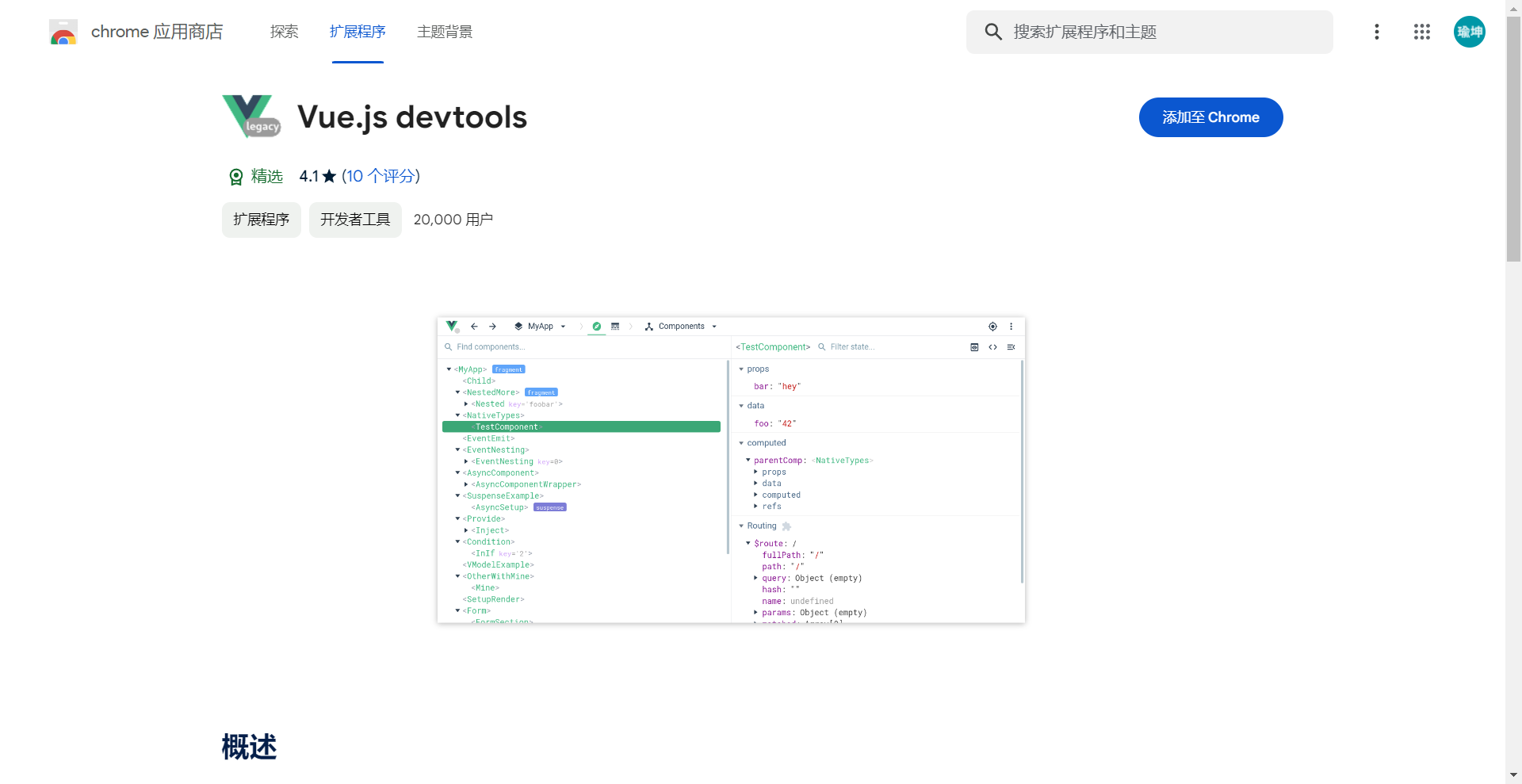
rkun1@LAPTOP-TUS5FU0D MINGW64 /c/code
$ mkdir VUE-START
rkun1@LAPTOP-TUS5FU0D MINGW64 /c/code
$ cd VUE-START/
rkun1@LAPTOP-TUS5FU0D MINGW64 /c/code/VUE-START
$ code .
创建index.html文件
<!DOCTYPE html>
<html>
<head>
<meta charset="utf-8">
<title></title>
<!-- 开发环境版本 -->
<title>Vue Basics</title>
<link href="https://cdn.jsdelivr.net/npm/bootstrap@5.3.2/dist/css/bootstrap.min.css" rel="stylesheet">
<script src="https://unpkg.com/vue@3"></script>
</head>
<body>
<div id="app" class="container">
<h1>{{ pageTitle }}</h1>
<p>{{ content }}</p>
</div>
<script>
Vue.createApp(
{
data() {
return {
pageTitle: "Hello,Vue",
content: "Welcome to the wonderful world of Vue"
}
}
}
).mount('#app')
</script>
</body>
</html>
- 引入了 Vue.js 库和 Bootstrap 样式。
- 在页面中创建了一个 Vue 应用的根元素(
)。
- 使用 Vue 数据绑定将数据(pageTitle 和 content)渲染到页面上。
- 在脚本部分使用 Vue.createApp 创建了一个 Vue 应用,并通过 mount 方法将其挂载到具有 id “app” 的元素上。
- 定义了两个数据属性 pageTitle 和 content,它们分别用于渲染页面上的标题和段落内容。
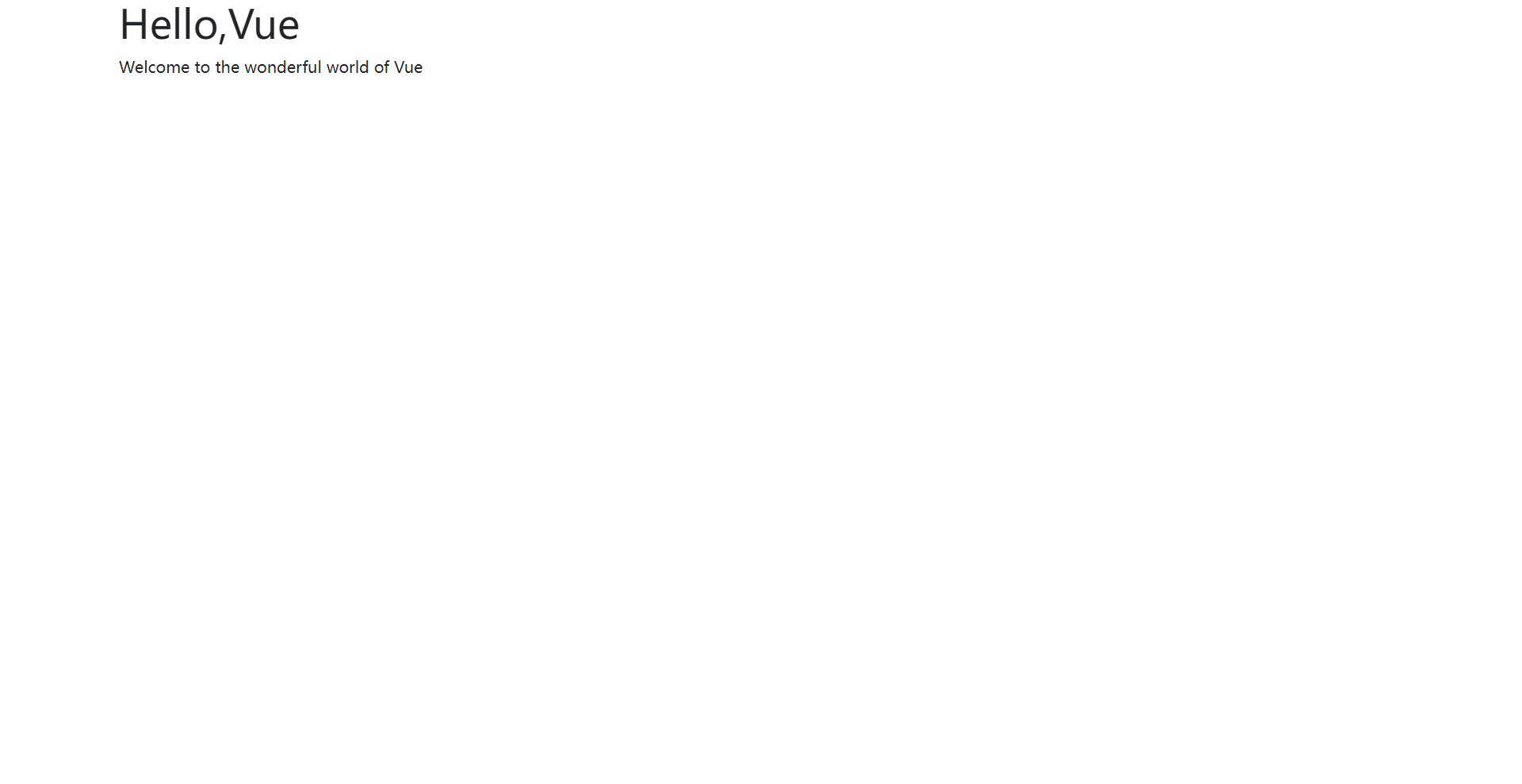
使用循环创建内容
index.html
<!DOCTYPE html>
<html>
<head>
<meta charset="utf-8">
<title></title>
<!-- 开发环境版本 -->
<title>Vue Basics</title>
<link href="https://cdn.jsdelivr.net/npm/bootstrap@5.3.2/dist/css/bootstrap.min.css" rel="stylesheet">
<script src="https://unpkg.com/vue@3"></script>
</head>
<body>
<nav class="navbar navbar-expand-lg bg-body-tertiary">
<div class="container-fluid">
<a class="navbar-brand" href="#">My Vue</a>
<ul class="navbar-nav me-auto mb-2 mb-lg-0">
<li v-for="link in links" class="nav-item">
<a class="nav-link" aria-current="page" href="#">{{ link }}</a>
</li>
</ul>
</div>
</nav>
<div id="app" class="container">
<h1>{{ pageTitle }}</h1>
<p>{{ content }}</p>
</div>
<script>
Vue.createApp(
{
data() {
return {
links: ['Home', 'About', 'Contact']
}
}
}
).mount('nav')
Vue.createApp(
{
data() {
return {
pageTitle: "Hello,Vue",
content: "Welcome to the wonderful world of Vue"
}
}
}
).mount('#app')
</script>
</body>
</html>
- 新增的部分主要是一个bootstrap简单的导航栏(navbar),以及对导航栏中链接的动态渲染。
- v-for=“link in links”:使用 Vue 的 v-for 指令,遍历 links 数组中的每个元素。
- 通过 Vue 的数据绑定和循环指令,动态地生成了一个简单的导航栏,链接的文本内容来自于 links 数组。
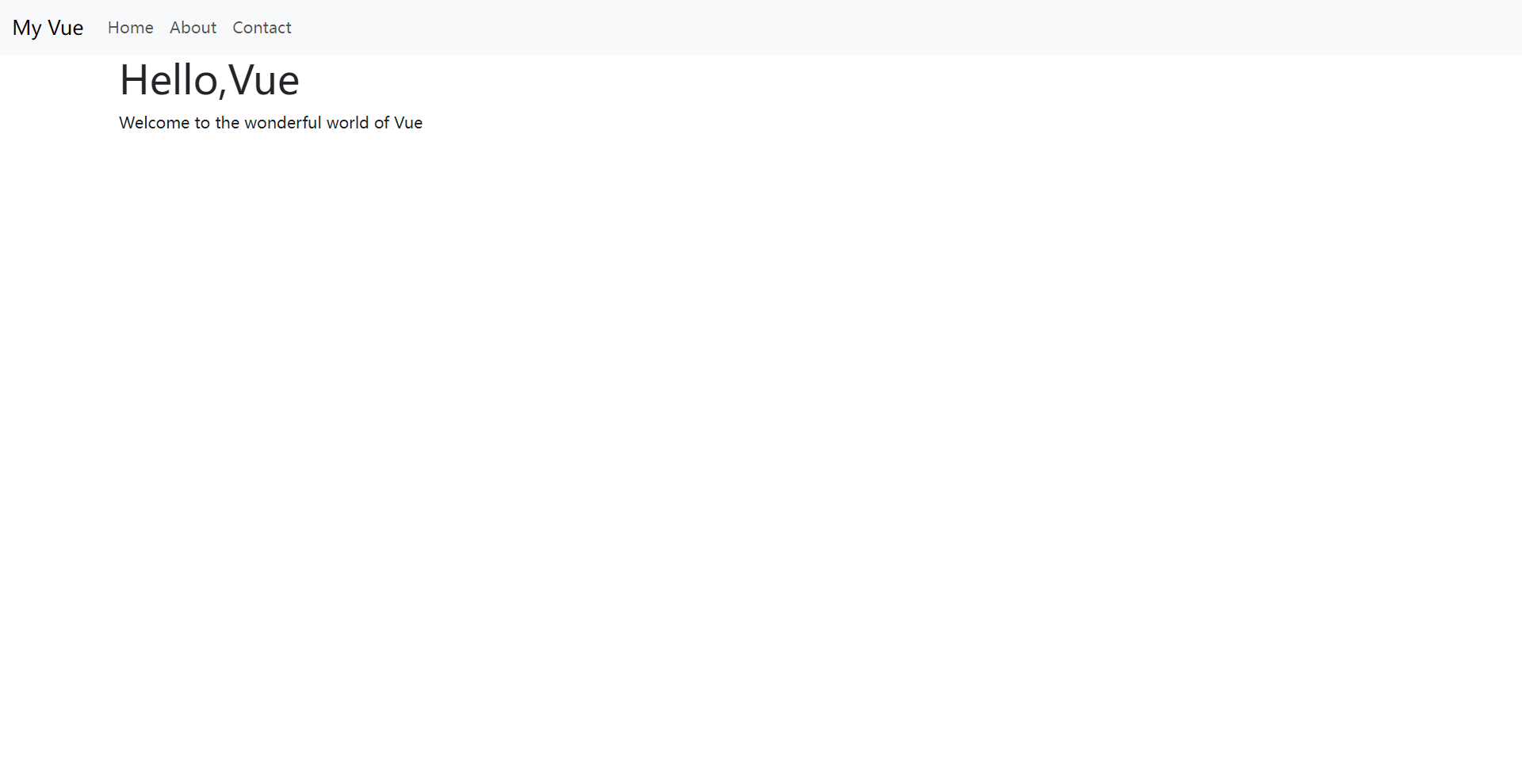
绑定数据到属性
index.html
<!DOCTYPE html>
<html>
<head>
<meta charset="utf-8">
<title></title>
<!-- 开发环境版本 -->
<title>Vue Basics</title>
<link href="https://cdn.jsdelivr.net/npm/bootstrap@5.3.2/dist/css/bootstrap.min.css" rel="stylesheet">
<script src="https://unpkg.com/vue@3"></script>
</head>
<body>
<nav class="navbar navbar-expand-lg bg-body-tertiary">
<div class="container-fluid">
<a class="navbar-brand" href="#">My Vue</a>
<ul class="navbar-nav me-auto mb-2 mb-lg-0">
<li v-for="link in links" class="nav-item">
<a class="nav-link" aria-current="page" :href="link.url"
:title="`this link goes to the ${link.text} page`">{{ link.text }}</a>
</li>
</ul>
</div>
</nav>
<div id="app" class="container">
<h1>{{ pageTitle }}</h1>
<p>{{ content }}</p>
</div>
<script>
Vue.createApp(
{
data() {
return {
links: [{ text: 'Home', url: 'home.html' },
{ text: 'About', url: 'about.html' },
{ text: 'Contact', url: 'contact.html' },
],
pageTitle: "Hello,Vue",
content: "Welcome to the wonderful world of Vue"
}
}
}
).mount('body')
</script>
</body>
</html>
- 在导航栏链接的部分,使用了动态绑定(:href 和 :title)来使链接的href属性和title属性动态地从数据中获取。
- :href=“link.url”:链接的 href 属性被绑定到 link.url,这样每个链接都有不同的目标页面。
- :title=“this link goes to the ${link.text} page”:链接的 title 属性也被绑定到一个动态字符串,以提供更具体的链接说明。
- links 数组的数据结构进行了更改,每个链接现在包含了 text 和 url 两个属性。这使得链接的文本和目标 URL 可以动态配置。

- 数据动态变化
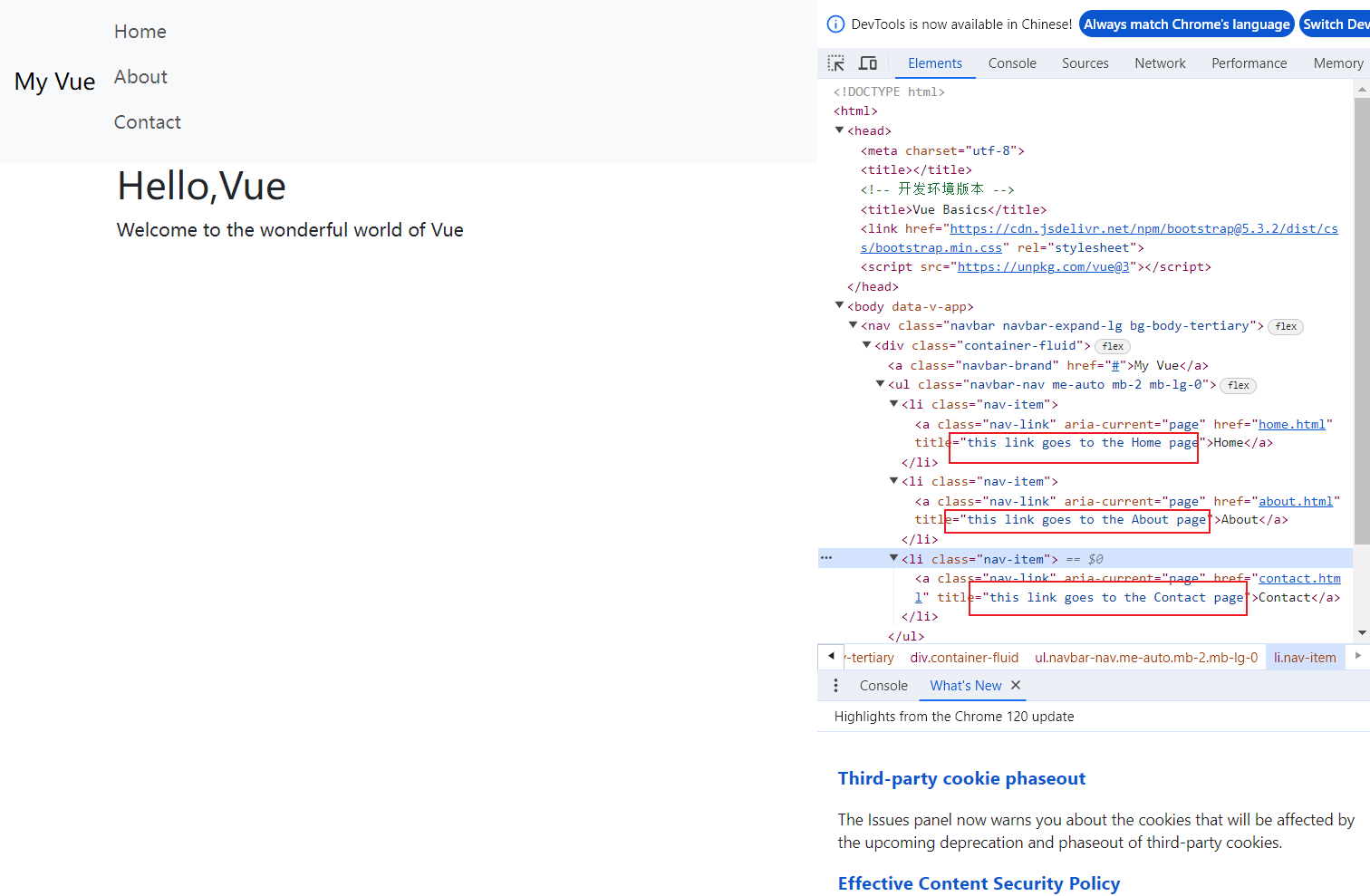
因为没有编写页面,所以点击任意一个导航,都会出现
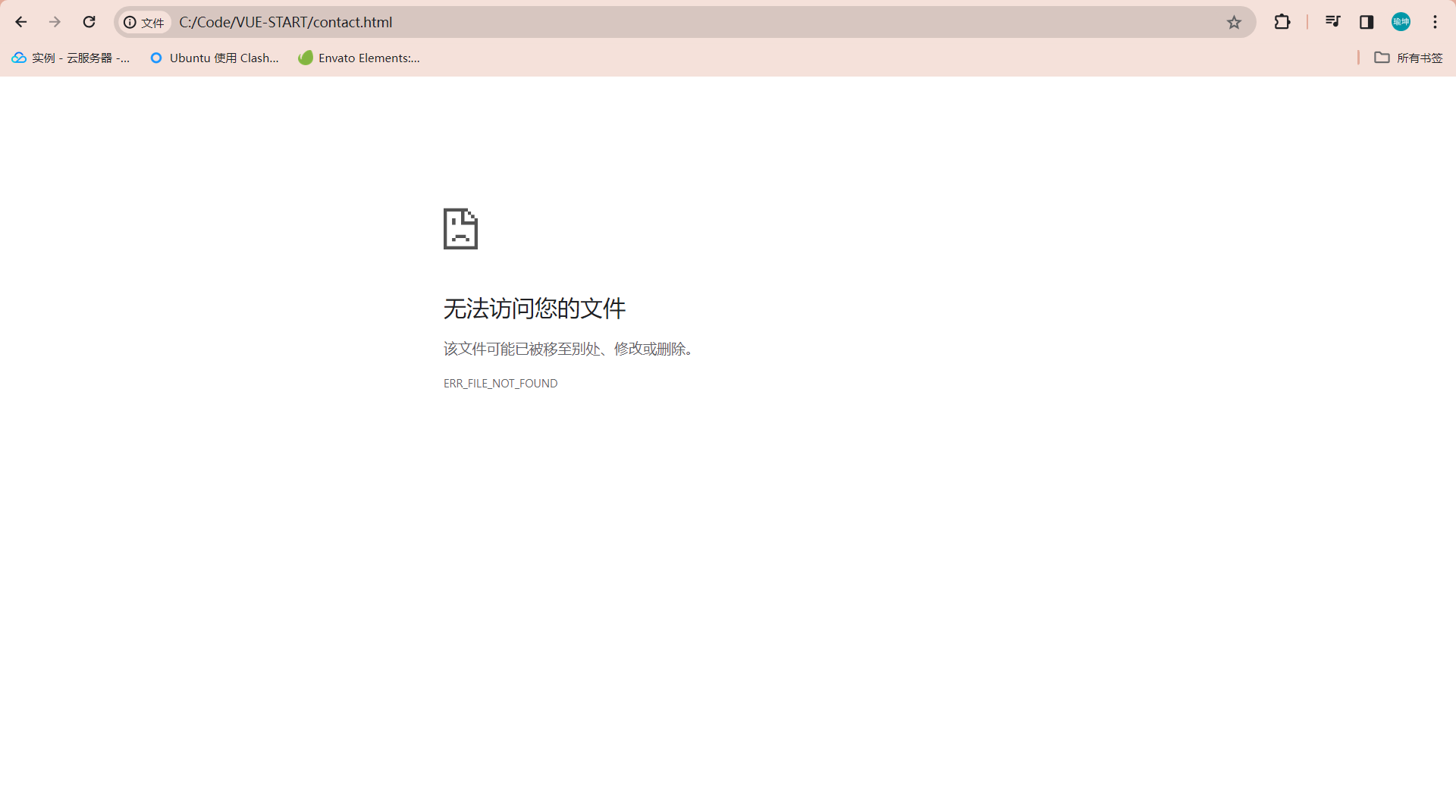
设置事件
index.html
<!DOCTYPE html>
<html>
<head>
<meta charset="utf-8">
<title></title>
<!-- 开发环境版本 -->
<title>Vue Basics</title>
<link href="https://cdn.jsdelivr.net/npm/bootstrap@5.3.2/dist/css/bootstrap.min.css" rel="stylesheet">
<script src="https://unpkg.com/vue@3"></script>
</head>
<body>
<nav class="navbar navbar-expand-lg bg-body-tertiary">
<div class="container-fluid">
<a class="navbar-brand" href="#">My Vue</a>
<ul class="navbar-nav me-auto mb-2 mb-lg-0">
<li v-for="(page,index) in pages " class="nav-item">
<a class="nav-link" aria-current="page" :href="page.link.url"
:title="`this link goes to the ${page.link.text} page`" @click.prevent="activePage = index">
{{ page.link.text }}</a>
</li>
</ul>
</div>
</nav>
<div id="app" class="container">
<h1>{{ pages[activePage].pageTitle }}</h1>
<p>{{ pages[activePage].content }}</p>
</div>
<script>
Vue.createApp(
{
data() {
return {
activePage: 0,
pages: [
{
link: { text: 'Home', url: 'index.html' },
pageTitle: 'Home Page',
content: 'This is the home content'
},
{
link: { text: 'About', url: 'about.html' },
pageTitle: 'About Page',
content: 'This is the about content'
},
{
link: { text: 'Contact', url: 'contact.html' },
pageTitle: 'Contact Page',
content: 'This is the Contact content'
},
]
}
}
}
).mount('body')
</script>
</body>
</html>
使用 v-for 遍历 pages 数组中的每个页面,并将其相关信息绑定到导航栏链接。通过 @click.prevent 监听点击事件,当用户点击链接时,更新 activePage 的值为当前页面的索引,从而切换到对应的页面。prevent 修饰符用于防止点击事件的默认行为,例如阻止链接跳转或表单的提交。
@click.prevent=“activePage = index” 这行代码表示当用户点击导航栏中的链接时,将会触发一个点击事件,而 .prevent 修饰符阻止了这个点击事件的默认行为。在这个上下文中,默认行为通常是链接跳转。因此,点击链接时不会像通常一样跳转到链接指定的页面,而是触发了你在 @click 处理函数中定义的逻辑,即更新 activePage 的值为当前页面的索引,实现了页面切换的功能。
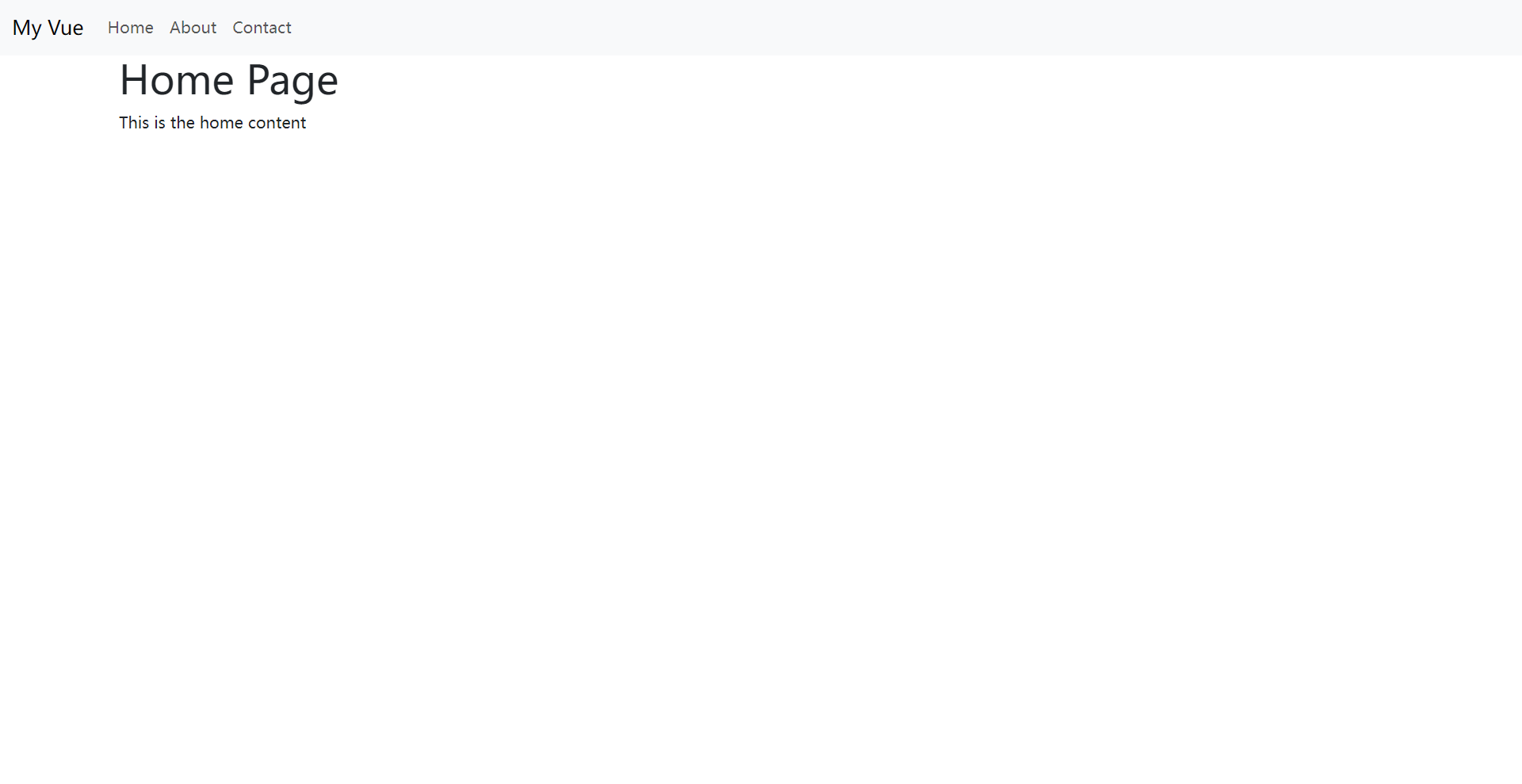
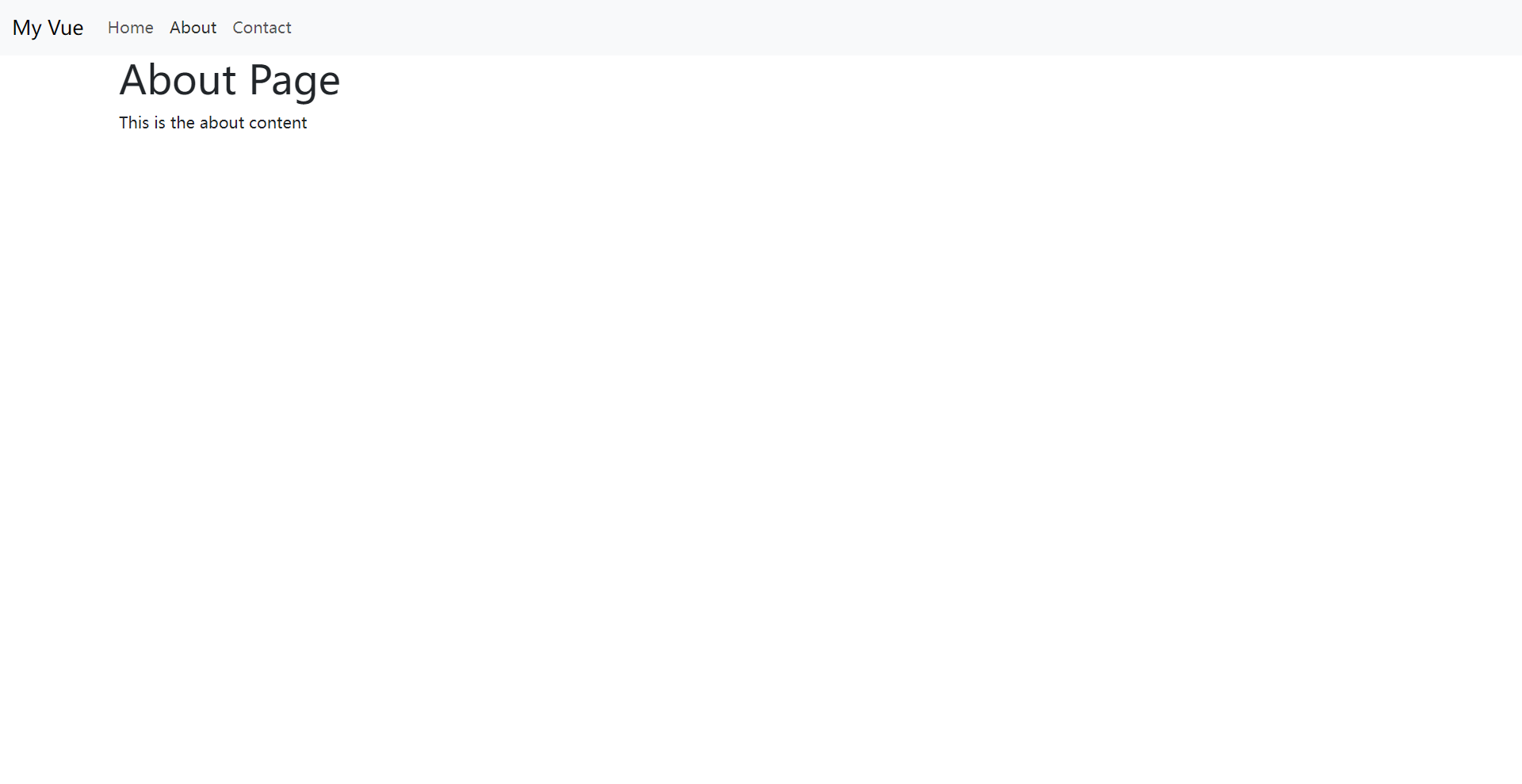
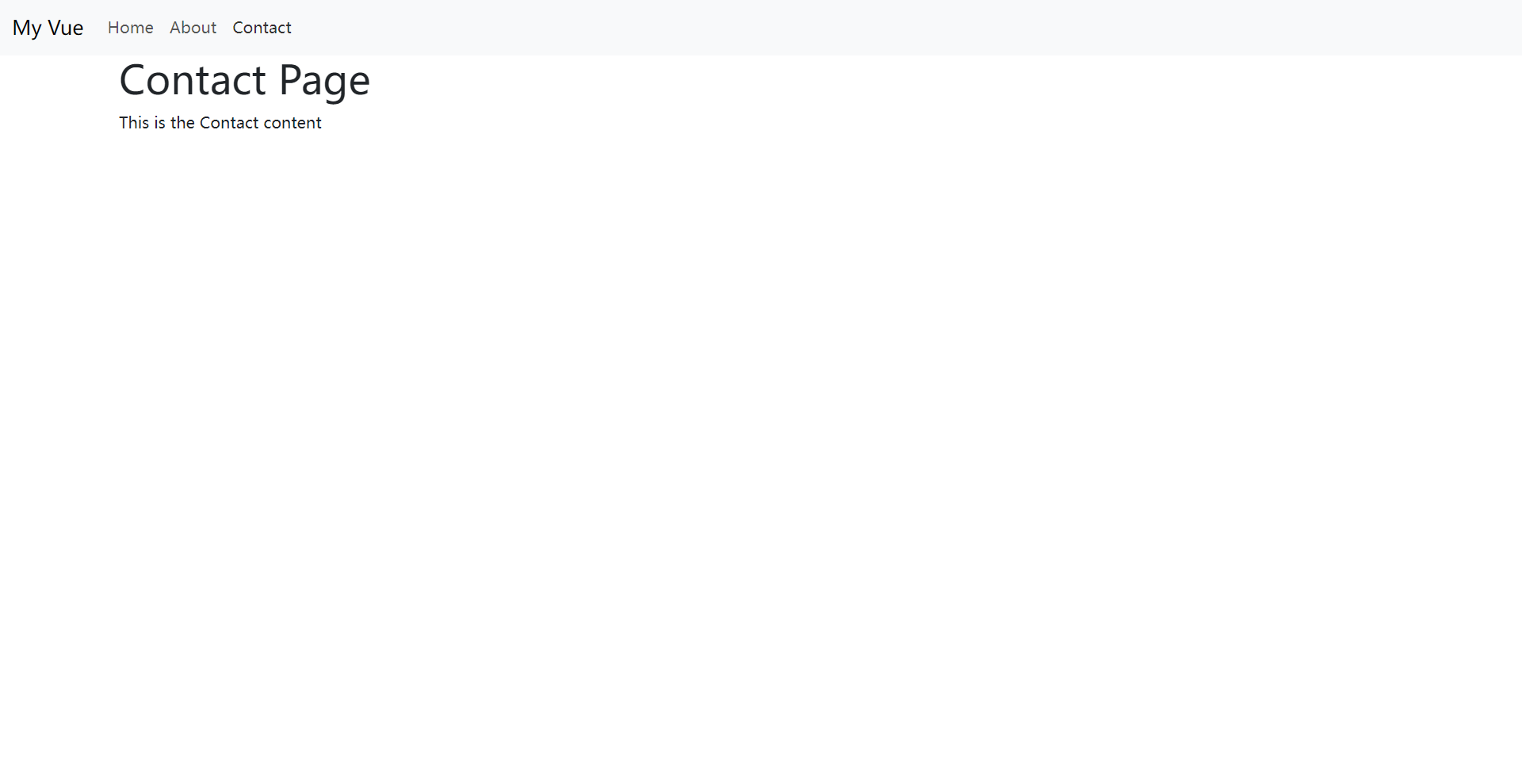
绑定CSS样式类
index.html
<!DOCTYPE html>
<html>
<head>
<meta charset="utf-8">
<title></title>
<!-- 开发环境版本 -->
<title>Vue Basics</title>
<link href="https://cdn.jsdelivr.net/npm/bootstrap@5.3.2/dist/css/bootstrap.min.css" rel="stylesheet">
<script src="https://unpkg.com/vue@3"></script>
</head>
<body>
<nav class="navbar navbar-expand-lg "
:class="{'navbar-light bg-light':!useDarkNavBar ,'navbar-dark bg-dark': useDarkNavBar }">
<div class="container-fluid">
<a class="navbar-brand" href="#">My Vue</a>
<ul class="navbar-nav me-auto mb-2 mb-lg-0">
<li v-for="(page,index) in pages " class="nav-item">
<a class="nav-link" aria-current="page" :href="page.link.url"
:title="`this link goes to the ${page.link.text} page`" @click.prevent="activePage = index">
{{ page.link.text }}</a>
</li>
</ul>
<form class="d-flex">
<button class="btn btn-primary" @click.prevent="useDarkNavBar = !useDarkNavBar">
Toggle NavBar
</button>
</form>
</div>
</nav>
<div id="app" class="container">
<h1>{{ pages[activePage].pageTitle }}</h1>
<p>{{ pages[activePage].content }}</p>
</div>
<script>
Vue.createApp(
{
data() {
return {
useDarkNavBar: false,
activePage: 0,
pages: [
{
link: { text: 'Home', url: 'index.html' },
pageTitle: 'Home Page',
content: 'This is the home content'
},
{
link: { text: 'About', url: 'about.html' },
pageTitle: 'About Page',
content: 'This is the about content'
},
{
link: { text: 'Contact', url: 'contact.html' },
pageTitle: 'Contact Page',
content: 'This is the Contact content'
},
]
}
}
}
).mount('body')
</script>
</body>
</html>
- 使用了 Vue.js 的动态 class 绑定功能,通过 :class 属性动态地设置 navbar 元素的类,以根据 useDarkNavBar 的值切换不同的样式。
- :class 属性,它接受一个对象,对象的键是类名,值是布尔表达式。如果值为 true,则该类名将被应用,如果值为 false,则该类名将被移除。因此,根据 useDarkNavBar 的值,navbar 元素会切换在明亮主题和暗黑主题之间。
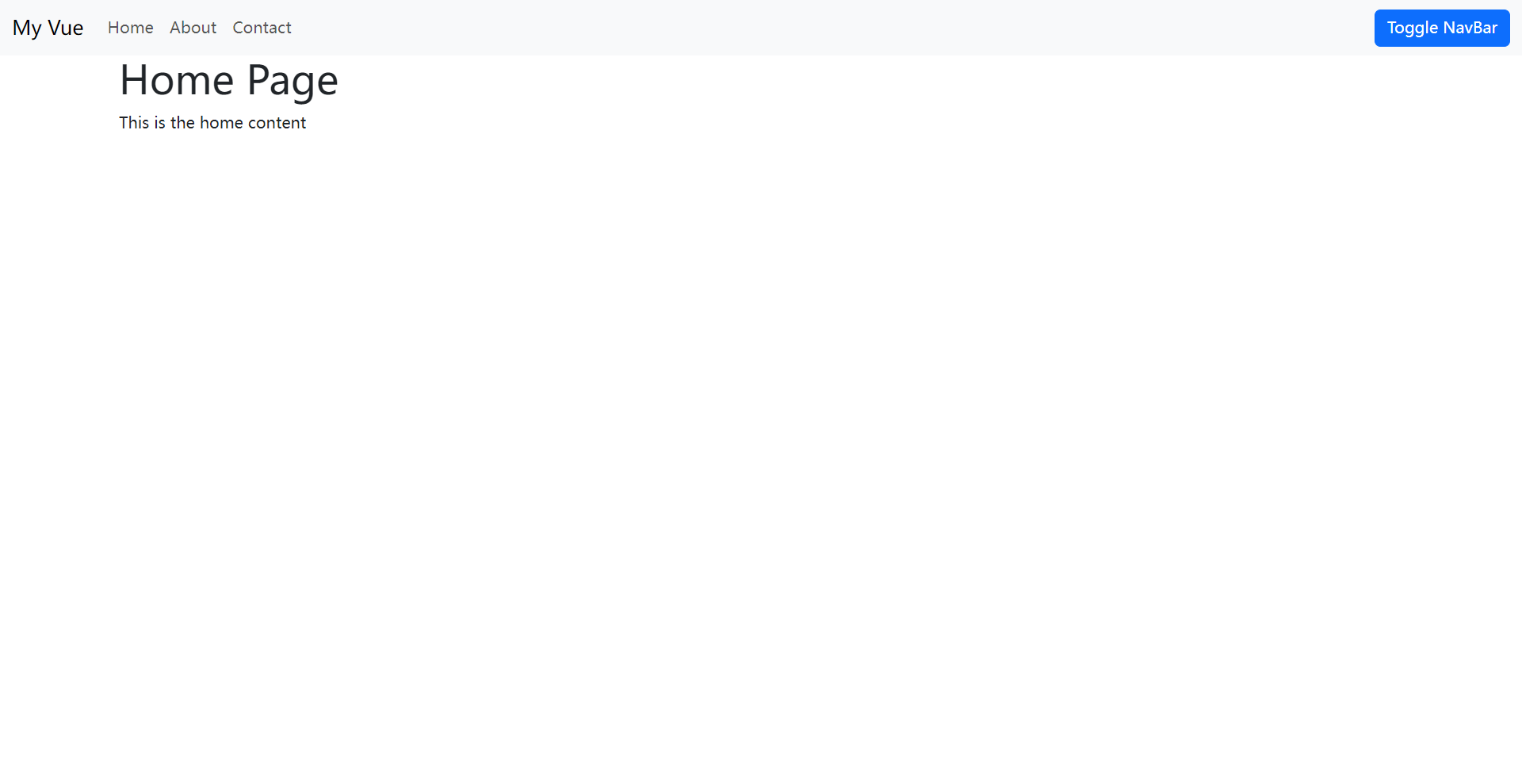
点击按钮,切换样式
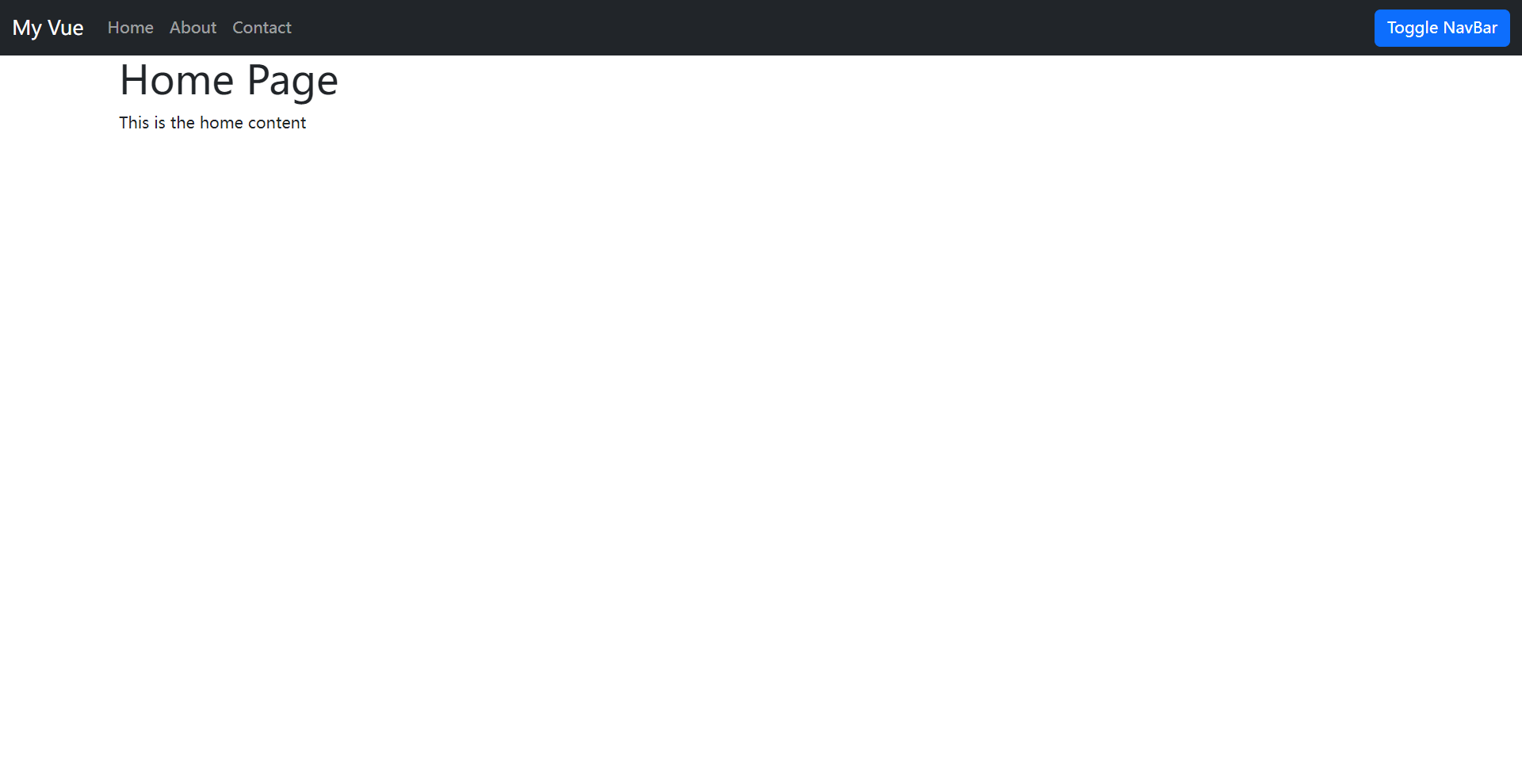
使用Computed Properties
index.html
<!DOCTYPE html>
<html>
<head>
<meta charset="utf-8">
<title></title>
<!-- 开发环境版本 -->
<title>Vue Basics</title>
<link href="https://cdn.jsdelivr.net/npm/bootstrap@5.3.2/dist/css/bootstrap.min.css" rel="stylesheet">
<script src="https://unpkg.com/vue@3"></script>
</head>
<body>
<nav class="navbar navbar-expand-lg " :class=navbarClasses>
<div class="container-fluid">
<a class="navbar-brand" href="#">My Vue</a>
<ul class="navbar-nav me-auto mb-2 mb-lg-0">
<li v-for="(page,index) in pages " class="nav-item">
<a class="nav-link" aria-current="page" :href="page.link.url"
:title="`this link goes to the ${page.link.text} page`" @click.prevent="activePage = index">
{{ page.link.text }}</a>
</li>
</ul>
<form class="d-flex">
<button class="btn btn-primary" @click.prevent="useDarkNavBar = !useDarkNavBar">
Toggle NavBar
</button>
</form>
</div>
</nav>
<div id="app" class="container">
<h1>{{ pages[activePage].pageTitle }}</h1>
<p>{{ pages[activePage].content }}</p>
</div>
<script>
Vue.createApp(
{
computed: {
navbarClasses() {
return {
'navbar-light': !this.useDarkNavBar,
'bg-light': !this.useDarkNavBar,
'navbar-dark': this.useDarkNavBar,
'bg-dark': this.useDarkNavBar,
}
}
},
data() {
return {
useDarkNavBar: false,
activePage: 0,
pages: [
{
link: { text: 'Home', url: 'index.html' },
pageTitle: 'Home Page',
content: 'This is the home content'
},
{
link: { text: 'About', url: 'about.html' },
pageTitle: 'About Page',
content: 'This is the about content'
},
{
link: { text: 'Contact', url: 'contact.html' },
pageTitle: 'Contact Page',
content: 'This is the Contact content'
},
]
}
}
}
).mount('body')
</script>
</body>
</html>
Vue.js的computed属性来计算navbarClasses,这是一个基于useDarkNavBar数据属性的计算属性。computed属性允许你在Vue实例中定义依赖于其他响应式数据的属性,这些属性会在其依赖发生变化时自动更新。
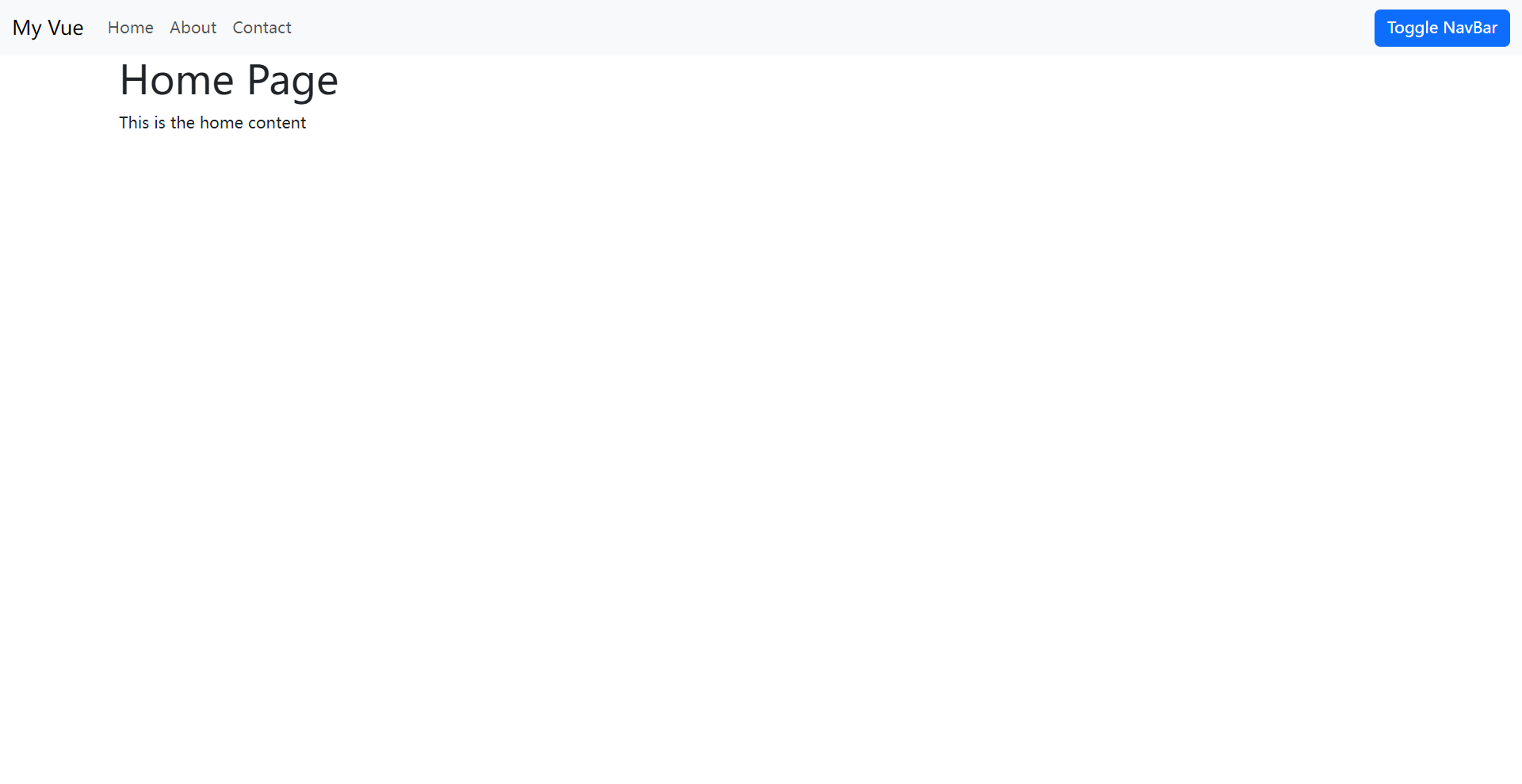
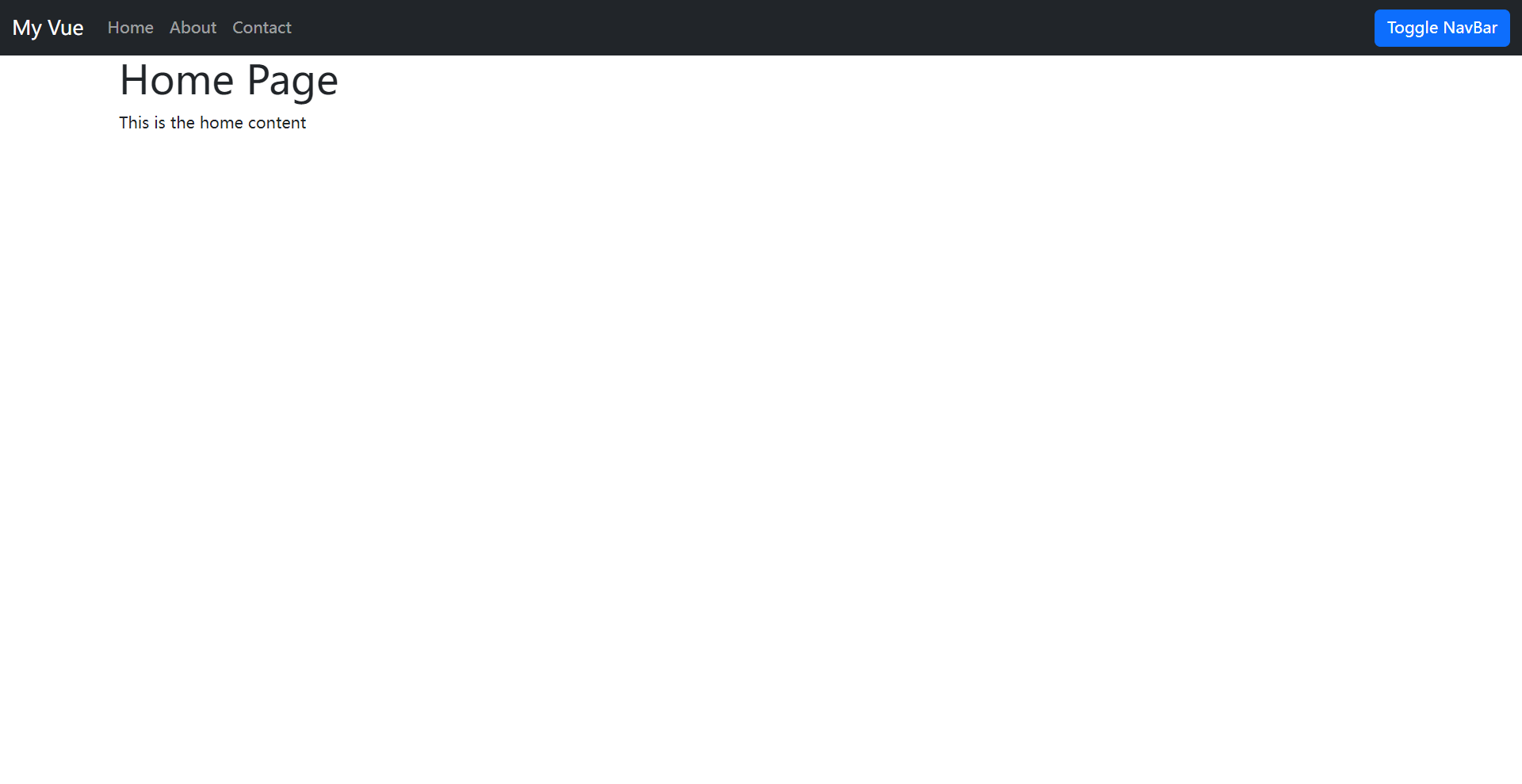
绑定CSS样式类 II
index.html
<!DOCTYPE html>
<html>
<head>
<meta charset="utf-8">
<title></title>
<!-- 开发环境版本 -->
<title>Vue Basics</title>
<link href="https://cdn.jsdelivr.net/npm/bootstrap@5.3.2/dist/css/bootstrap.min.css" rel="stylesheet">
<script src="https://unpkg.com/vue@3"></script>
</head>
<body>
<nav class="navbar navbar-expand-lg " :class="[`navbar-${theme}`,`bg-${theme}`,'navbar','navbar-expand-lg']">
<div class="container-fluid">
<a class="navbar-brand" href="#">My Vue</a>
<ul class="navbar-nav me-auto mb-2 mb-lg-0">
<li v-for="(page,index) in pages " class="nav-item">
<a class="nav-link" aria-current="page" :href="page.link.url"
:title="`this link goes to the ${page.link.text} page`" @click.prevent="activePage = index">
{{ page.link.text }}</a>
</li>
</ul>
<form class="d-flex">
<button class="btn btn-primary" @click.prevent="changeTheme()">
Toggle NavBar
</button>
</form>
</div>
</nav>
<div id="app" class="container">
<h1>{{ pages[activePage].pageTitle }}</h1>
<p>{{ pages[activePage].content }}</p>
</div>
<script>
Vue.createApp(
{
data() {
return {
theme: 'light',
activePage: 0,
pages: [
{
link: { text: 'Home', url: 'index.html' },
pageTitle: 'Home Page',
content: 'This is the home content'
},
{
link: { text: 'About', url: 'about.html' },
pageTitle: 'About Page',
content: 'This is the about content'
},
{
link: { text: 'Contact', url: 'contact.html' },
pageTitle: 'Contact Page',
content: 'This is the Contact content'
},
]
};
},
methods: {
changeTheme() {
let theme = 'light';
if (this.theme == 'light') {
theme = 'dark';
}
this.theme = theme;
}
}
}
).mount('body')
</script>
</body>
</html>
- changeTheme 方法:这是一个在 Vue 实例的 methods 属性中定义的方法。
- let theme = ‘light’;:首先,定义了一个局部变量 theme 并初始化为 ‘light’。
- if (this.theme == ‘light’) { theme = ‘dark’; }:检查当前主题是否为 ‘light’,如果是,则将 theme 设置为 ‘dark’,实现了主题的切换。
- this.theme = theme;:将更新后的主题应用到 Vue 实例的 theme 数据属性上,触发视图的重新渲染,从而实现导航栏样式的动态切换。
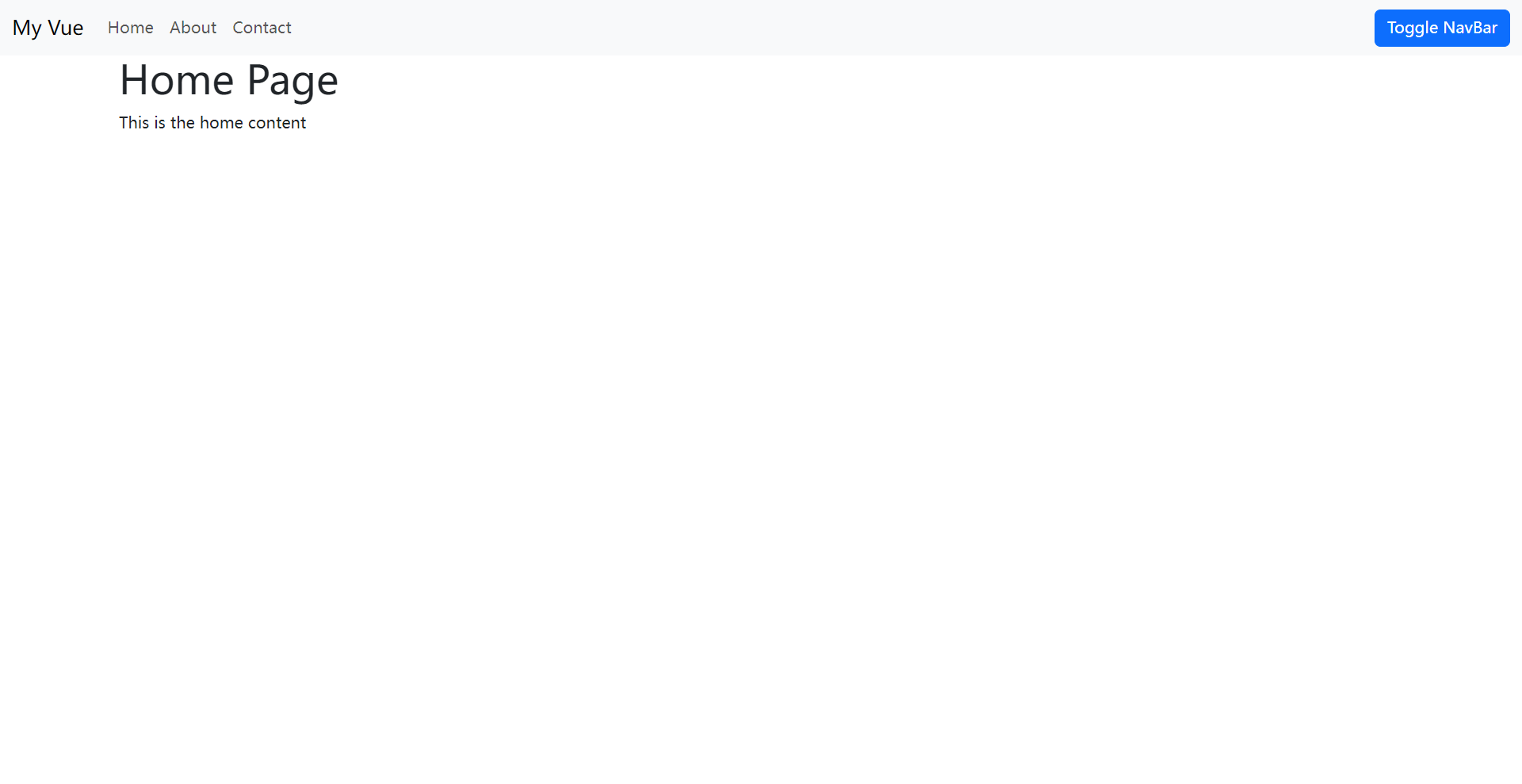
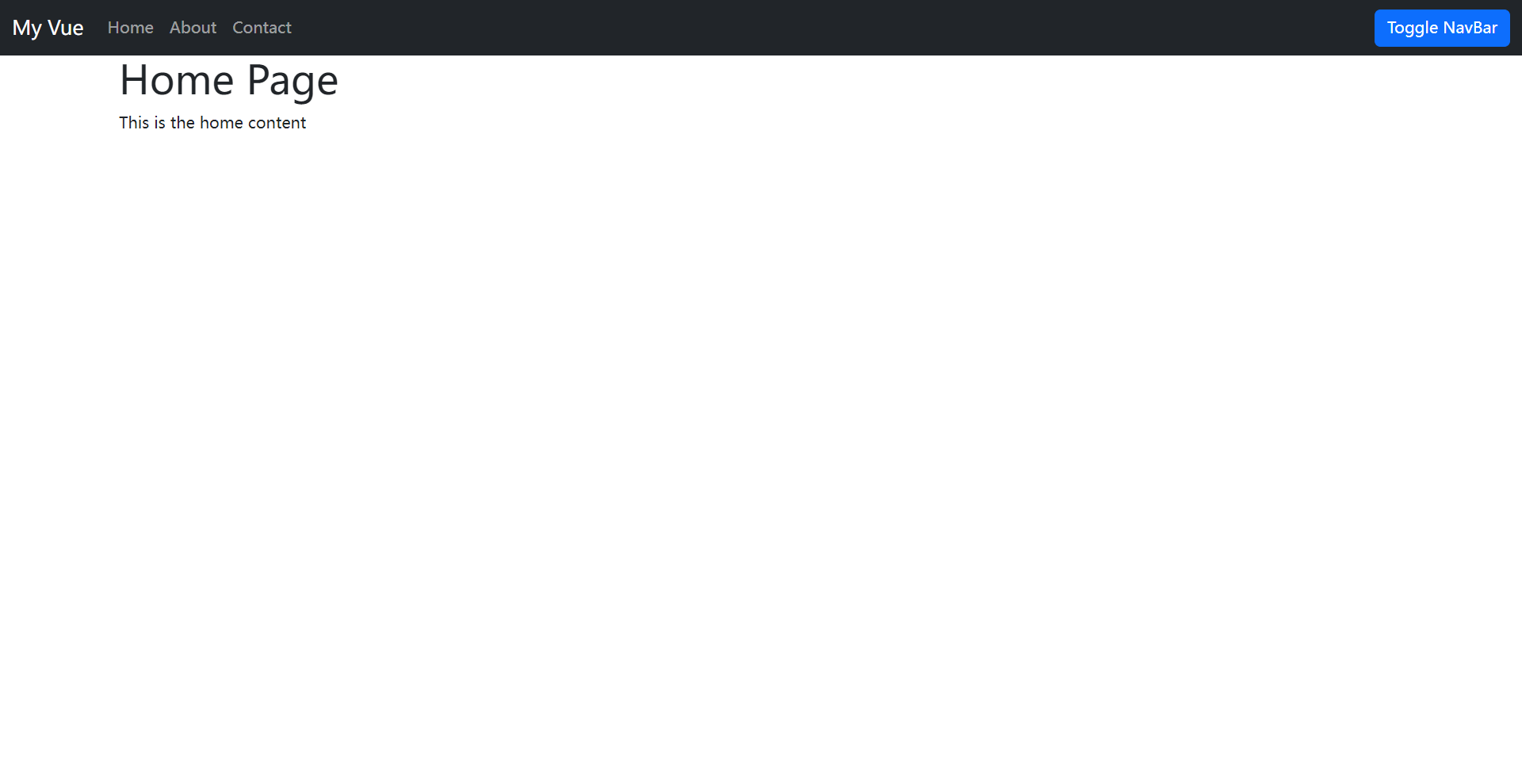
组件
index.html
<!DOCTYPE html>
<html>
<head>
<meta charset="utf-8">
<title></title>
<!-- 开发环境版本 -->
<title>Vue Basics</title>
<link href="https://cdn.jsdelivr.net/npm/bootstrap@5.3.2/dist/css/bootstrap.min.css" rel="stylesheet">
<script src="https://unpkg.com/vue@3"></script>
</head>
<body>
<nav class="navbar navbar-expand-lg " :class="[`navbar-${theme}`,`bg-${theme}`,'navbar','navbar-expand-lg']">
<div class="container-fluid">
<a class="navbar-brand" href="#">My Vue</a>
<ul class="navbar-nav me-auto mb-2 mb-lg-0">
<li v-for="(page,index) in pages " class="nav-item">
<a class="nav-link" aria-current="page" :href="page.link.url"
:title="`this link goes to the ${page.link.text} page`" @click.prevent="activePage = index">
{{ page.link.text }}</a>
</li>
</ul>
<form class="d-flex">
<button class="btn btn-primary" @click.prevent="changeTheme()">
Toggle NavBar
</button>
</form>
</div>
</nav>
<page-viewer :page="pages[activePage]"></page-viewer>
<script>
let app = Vue.createApp(
{
data() {
return {
theme: 'light',
activePage: 0,
pages: [
{
link: { text: 'Home', url: 'index.html' },
pageTitle: 'Home Page',
content: 'This is the home content'
},
{
link: { text: 'About', url: 'about.html' },
pageTitle: 'About Page',
content: 'This is the about content'
},
{
link: { text: 'Contact', url: 'contact.html' },
pageTitle: 'Contact Page',
content: 'This is the Contact content'
},
]
};
},
methods: {
changeTheme() {
let theme = 'light';
if (this.theme == 'light') {
theme = 'dark';
}
this.theme = theme;
}
}
}
);
app.component('page-viewer', {
props: ['page'],
template: `
<div id="app" class="container">
<h1>{{page.pageTitle}}</h1>
<p>{{page.content}}</p>
</div> `
});
app.mount('body')
</script>
</body>
</html>
通过 app.component 方法创建了一个名为 page-viewer 的组件。这个组件接受一个名为 page 的 prop,并根据传入的页面信息渲染页面的标题和内容。
- app.component(‘page-viewer’, {…}):使用 app.component 方法创建一个名为 page-viewer 的组件。
- props: [‘page’]:声明组件的属性 page,这表示 page-viewer 组件可以接受一个名为 page 的 prop。
- template:定义了组件的模板。在这里,模板包含了一个 div 元素,其中包含了页面的标题和内容,使用了动态绑定来显示传入的页面信息。
- 插值表达式:{{page.pageTitle}} 和 {{page.content}} 是插值表达式,用于将 page prop 中的数据动态地显示在组件中。
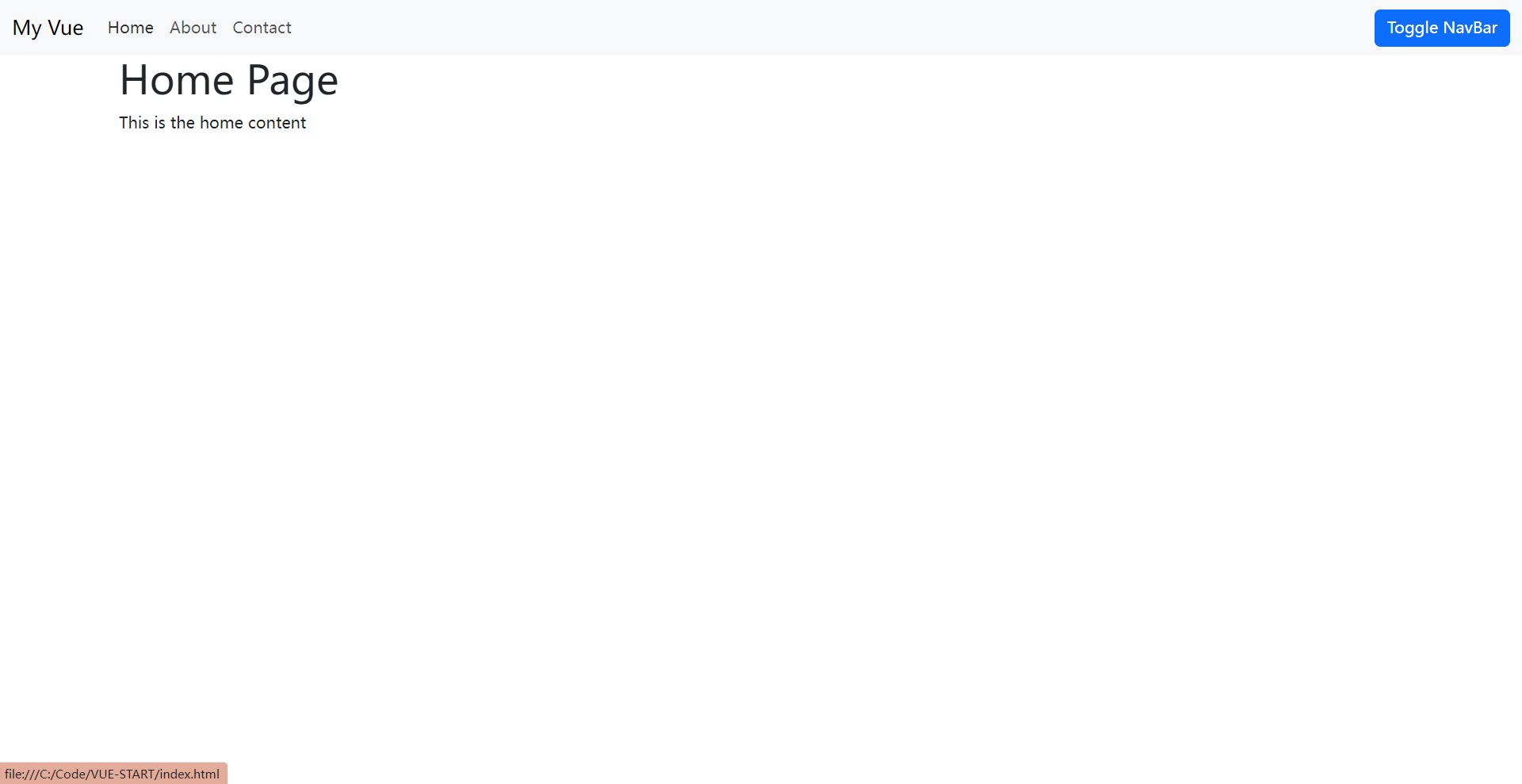
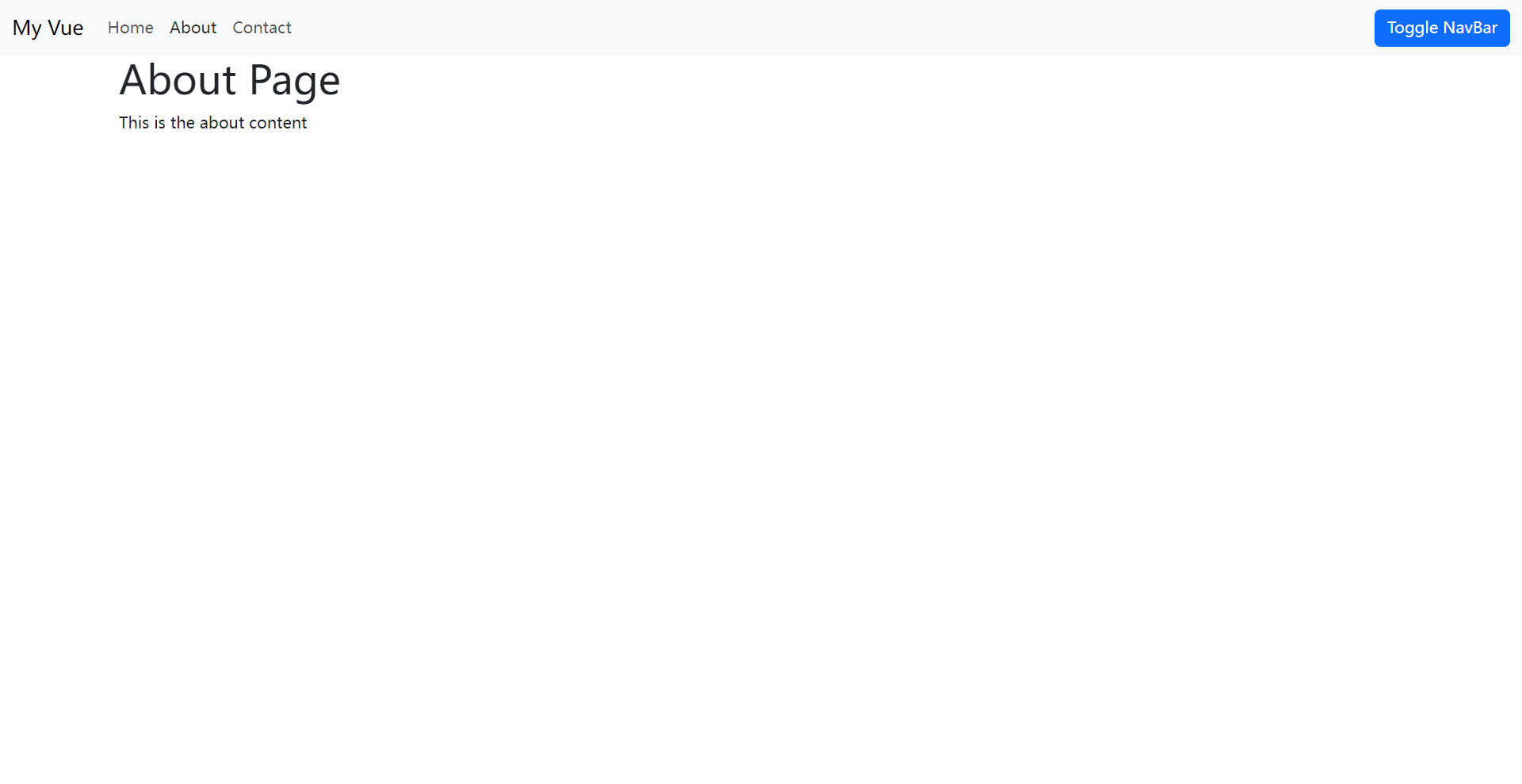
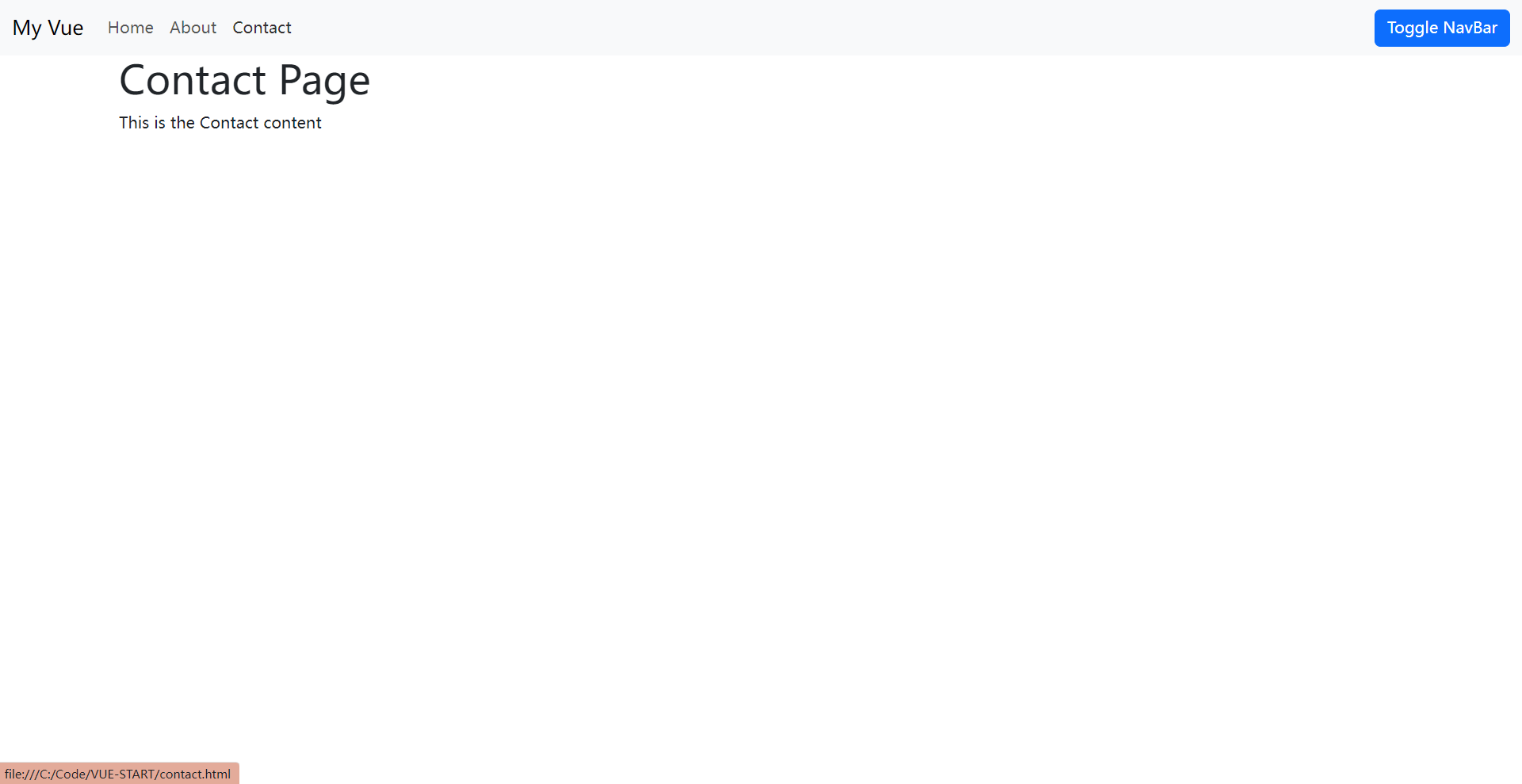
理解数据流
index.html
<!DOCTYPE html>
<html lang="en">
<head>
<meta charset="utf-8">
<title>Vue Basics</title>
<link href="https://cdn.jsdelivr.net/npm/bootstrap@5.3.2/dist/css/bootstrap.min.css" rel="stylesheet">
<script src="https://unpkg.com/vue@3"></script>
</head>
<body>
<navbar :pages="pages" :active-page="activePage" :nav-link-click="(index) => activePage = index"></navbar>
<page-viewer :page="pages[activePage]"></page-viewer>
<script>
const app = Vue.createApp({
data() {
return {
activePage: 0,
pages: [
{
link: { text: 'Home', url: 'index.html' },
pageTitle: 'Home Page',
content: 'This is the home content'
},
{
link: { text: 'About', url: 'about.html' },
pageTitle: 'About Page',
content: 'This is the about content'
},
{
link: { text: 'Contact', url: 'contact.html' },
pageTitle: 'Contact Page',
content: 'This is the Contact content'
}
]
};
}
});
app.component('page-viewer', {
props: ['page'],
template: `
<div id="app" class="container">
<h1>{{page.pageTitle}}</h1>
<p>{{page.content}}</p>
</div>
`
});
app.component('navbar', {
props: ['pages', 'activePage', 'navLinkClick'],
template: `
<nav class="navbar navbar-expand-lg"
:class="{ 'navbar-light': theme === 'light', 'navbar-dark': theme === 'dark', 'bg-light': theme === 'light', 'bg-dark': theme === 'dark' }">
<div class="container-fluid">
<a class="navbar-brand" href="#">My Vue</a>
<ul class="navbar-nav me-auto mb-2 mb-lg-0">
<li v-for="(page, index) in pages" class="nav-item">
<a class="nav-link" :href="page.link.url"
:title="[\`this link goes to the \${page.link.text} page\`]" @click.prevent="navLinkClick(index)">
{{ page.link.text }}
</a>
</li>
</ul>
<form class="d-flex">
<button class="btn btn-primary" @click.prevent="changeTheme()">
Toggle NavBar
</button>
</form>
</div>
</nav>
`,
data() {
return {
theme: 'light',
};
},
methods: {
changeTheme() {
this.theme = (this.theme === 'light') ? 'dark' : 'light';
}
}
});
app.mount('body');
</script>
</body>
</html>
- props: 定义了pages、activePage和navLinkClick作为该组件的属性,这些属性将通过父组件传递给navbar组件。
- template: 定义了组件的模板,显示一个导航栏,其中包括品牌标识、页面链接以及一个按钮来切换导航栏的主题。
- data: 定义了组件的数据属性theme,初始值为’light’,用于控制导航栏的主题。
- methods: 定义了组件的方法changeTheme,用于切换导航栏的主题。
本文来自互联网用户投稿,该文观点仅代表作者本人,不代表本站立场。本站仅提供信息存储空间服务,不拥有所有权,不承担相关法律责任。 如若内容造成侵权/违法违规/事实不符,请联系我的编程经验分享网邮箱:veading@qq.com进行投诉反馈,一经查实,立即删除!